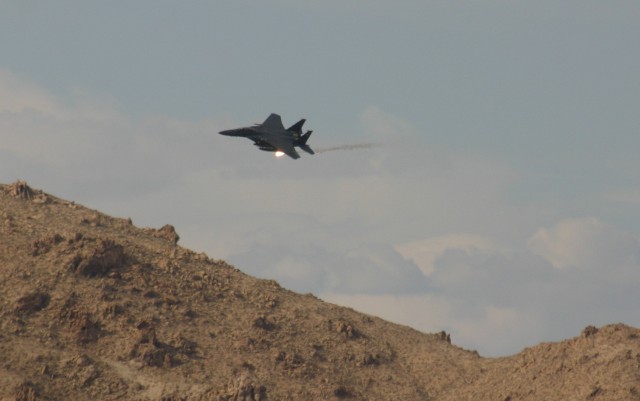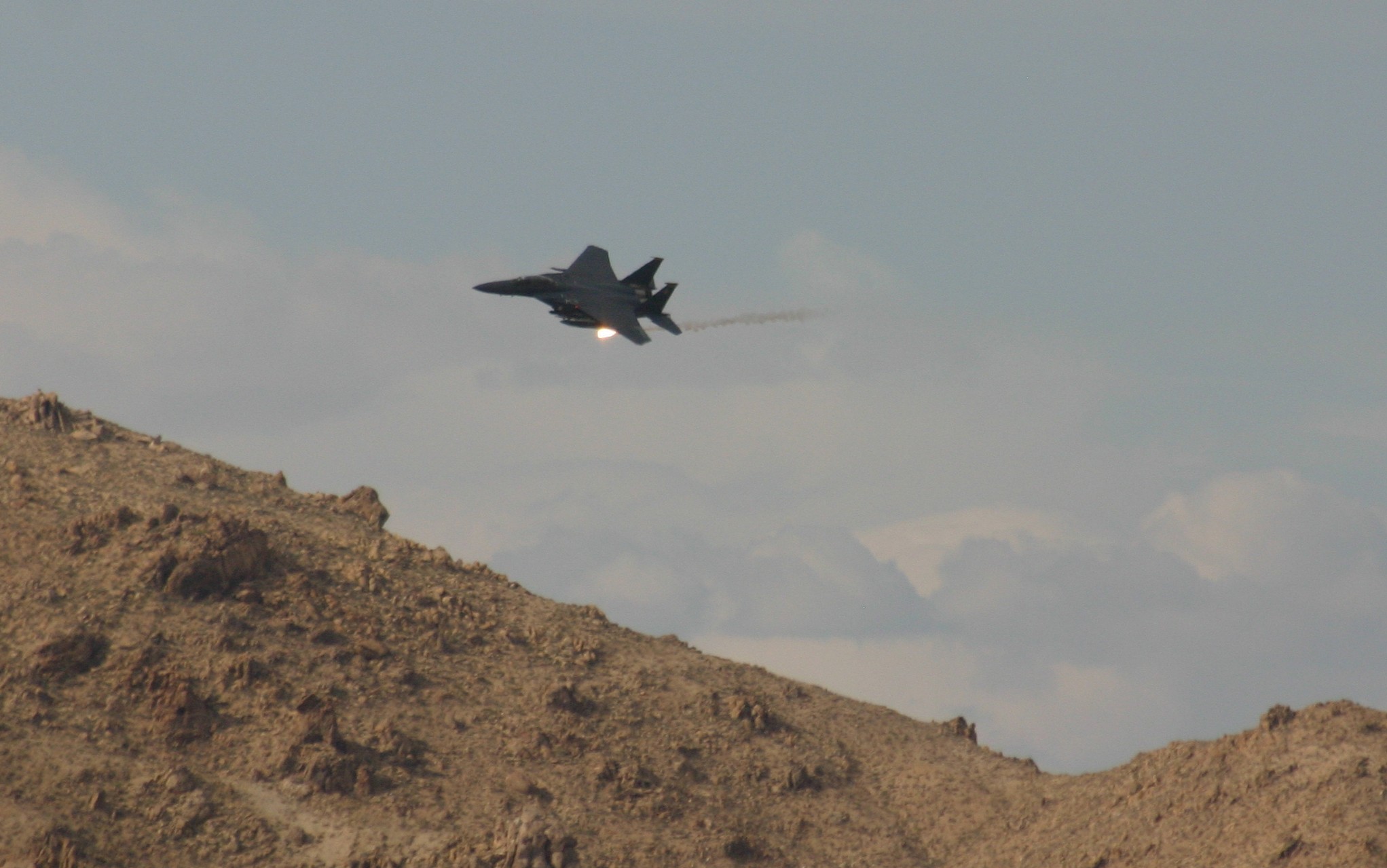FORT IRWIN, Calif. (Army News Service, Jun.11, 2009) - The Operations Group at the National Training Center here, the Air Force's Green Flag West at Nellis Air Force Base, Nev., and U.S. Joint Forces Command's Joint Fires Integration and Interoperability Team are working closely together to prepare Army and Air Force personnel for the rigors of combat in irregular warfare environments, according to senior leaders at NTC.
Part of this training focuses on coordinating Army fires with Air Force close air support aircraft to create a joint air attack team training experience to prepare units for similar operations once deployed in theater.
"The goal is to synchronize Air Force CAS aircraft with Army attack helicopters, artillery and mortar fires to provide decisive combat power at the right place and time to support the maneuver forces' ability to defeat a hostile thinking and adaptive enemy on today's asymmetric battlefield," said Sgt. 1st Class Donald Williams, JFIIT's senior fire support operations and plans noncommissioned officer at NTC.
The Army unit currently training here is the 4th Brigade Combat Team, 1st Infantry Division from Ft. Riley, Kan.
"This is a great opportunity for our soldiers to work with another service in a highly realistic operational training environment," said Maj. Matthew Payne, brigade fire support officer, 4th BCT, 1st Inf. Div. "Our ability to call for and adjust fires with the multitude of weapons systems that are available here will serve us well when we deploy downrange. We're training the way we fight and this experience has been priceless."
NTC employs JAAT situational-training exercises allowing BCTs and other joint assets to gain experience in planning, coordinating and executing sequential fires under similar conditions that they could face in Iraq or Afghanistan.
"Confidence," said Maj. Doug Thomas, brigade fire-support trainer at NTC. "That's what we want the entire joint fires team to gain by training here. Joint assets that are integrated here allow us to provide immediate training feedback to the entire fires team based on current doctrine and tactics, techniques and procedures that are being used in theater."
"I want to help educate and improve the visibility of joint fires observers within the Army and how they can be used by the BCT and integrated with joint terminal attack controllers to provide the ground commander more trust and confidence in using CAS assets to defeat the threat," said Staff Sgt. Nick Brzeski, NTC training mentor from the 1st BCT, 1st Armored Division, Fort Bliss, Texas. "The JFO will help speed up the targeting process and provide more accurate and timely fires that increase our forces combat effectiveness while reducing the potential of friendly fire and collateral damage."
JAAT training at NTC enables units to work together to hone their fires related skills and battle drills.
"Units must understand their tactical standard-operating procedures on how to plan for and execute CAS," said Bobby Taylor, JFIIT senior CAS analyst at NTC. "This training helps them down that road, but it's only the beginning. They've got to make sure they have the right equipment to communicate across the services and are trained on how to best use that gear to become an integral part of the BCT fires process."
"This training helps the brigades and the entire fires team to shorten their learning curve once they're in theater and ensures integration of joint assets so the commander can more efficiently leverage all capabilities on the battlefield," added Williams.
(Casey Bain works with the Joint Fires Integration and Interoperability Team at U.S. Joint Forces Command.)


Social Sharing